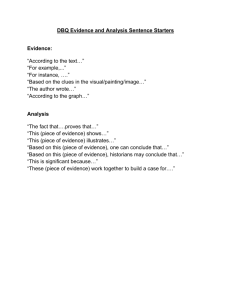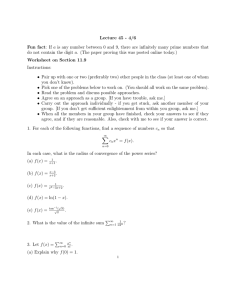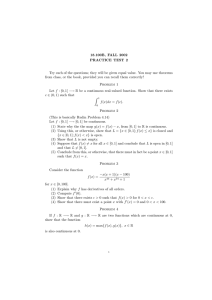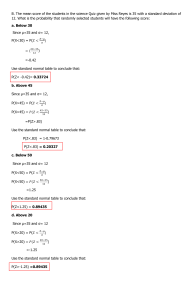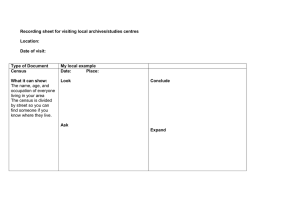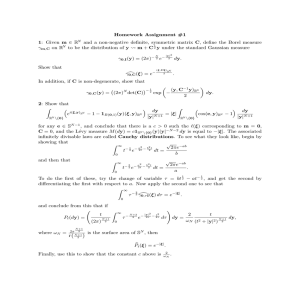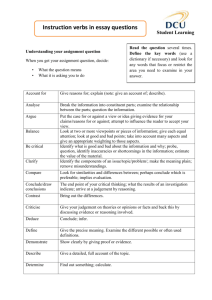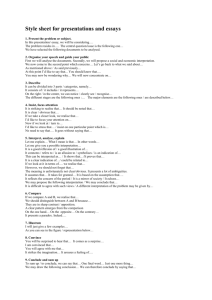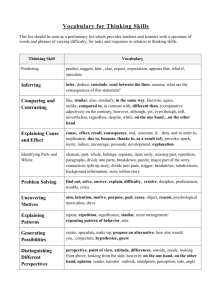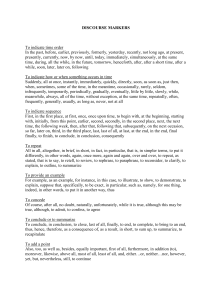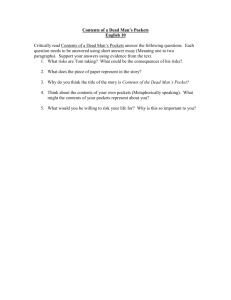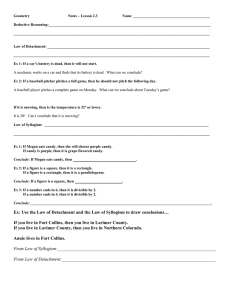DO`S AND DON`TS OF ORAL PRESENTATIONS
advertisement
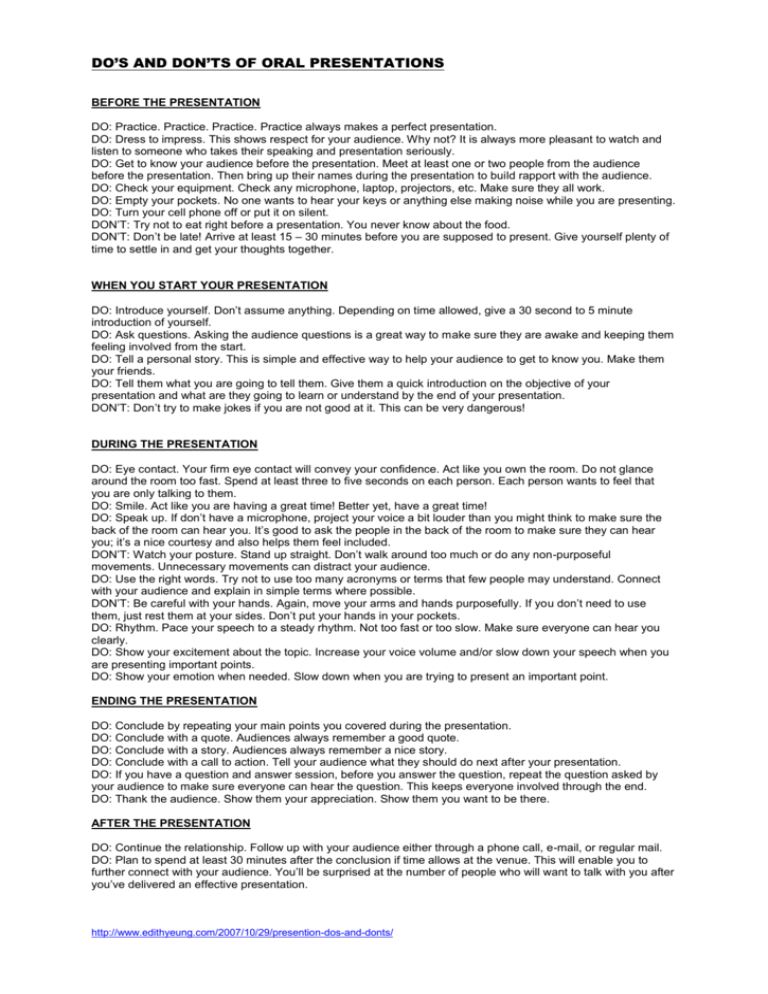
DO’S AND DON’TS OF ORAL PRESENTATIONS BEFORE THE PRESENTATION DO: Practice. Practice. Practice. Practice always makes a perfect presentation. DO: Dress to impress. This shows respect for your audience. Why not? It is always more pleasant to watch and listen to someone who takes their speaking and presentation seriously. DO: Get to know your audience before the presentation. Meet at least one or two people from the audience before the presentation. Then bring up their names during the presentation to build rapport with the audience. DO: Check your equipment. Check any microphone, laptop, projectors, etc. Make sure they all work. DO: Empty your pockets. No one wants to hear your keys or anything else making noise while you are presenting. DO: Turn your cell phone off or put it on silent. DON’T: Try not to eat right before a presentation. You never know about the food. DON’T: Don’t be late! Arrive at least 15 – 30 minutes before you are supposed to present. Give yourself plenty of time to settle in and get your thoughts together. WHEN YOU START YOUR PRESENTATION DO: Introduce yourself. Don’t assume anything. Depending on time allowed, give a 30 second to 5 minute introduction of yourself. DO: Ask questions. Asking the audience questions is a great way to make sure they are awake and keeping them feeling involved from the start. DO: Tell a personal story. This is simple and effective way to help your audience to get to know you. Make them your friends. DO: Tell them what you are going to tell them. Give them a quick introduction on the objective of your presentation and what are they going to learn or understand by the end of your presentation. DON’T: Don’t try to make jokes if you are not good at it. This can be very dangerous! DURING THE PRESENTATION DO: Eye contact. Your firm eye contact will convey your confidence. Act like you own the room. Do not glance around the room too fast. Spend at least three to five seconds on each person. Each person wants to feel that you are only talking to them. DO: Smile. Act like you are having a great time! Better yet, have a great time! DO: Speak up. If don’t have a microphone, project your voice a bit louder than you might think to make sure the back of the room can hear you. It’s good to ask the people in the back of the room to make sure they can hear you; it’s a nice courtesy and also helps them feel included. DON’T: Watch your posture. Stand up straight. Don’t walk around too much or do any non-purposeful movements. Unnecessary movements can distract your audience. DO: Use the right words. Try not to use too many acronyms or terms that few people may understand. Connect with your audience and explain in simple terms where possible. DON’T: Be careful with your hands. Again, move your arms and hands purposefully. If you don’t need to use them, just rest them at your sides. Don’t put your hands in your pockets. DO: Rhythm. Pace your speech to a steady rhythm. Not too fast or too slow. Make sure everyone can hear you clearly. DO: Show your excitement about the topic. Increase your voice volume and/or slow down your speech when you are presenting important points. DO: Show your emotion when needed. Slow down when you are trying to present an important point. ENDING THE PRESENTATION DO: Conclude by repeating your main points you covered during the presentation. DO: Conclude with a quote. Audiences always remember a good quote. DO: Conclude with a story. Audiences always remember a nice story. DO: Conclude with a call to action. Tell your audience what they should do next after your presentation. DO: If you have a question and answer session, before you answer the question, repeat the question asked by your audience to make sure everyone can hear the question. This keeps everyone involved through the end. DO: Thank the audience. Show them your appreciation. Show them you want to be there. AFTER THE PRESENTATION DO: Continue the relationship. Follow up with your audience either through a phone call, e-mail, or regular mail. DO: Plan to spend at least 30 minutes after the conclusion if time allows at the venue. This will enable you to further connect with your audience. You’ll be surprised at the number of people who will want to talk with you after you’ve delivered an effective presentation. http://www.edithyeung.com/2007/10/29/presention-dos-and-donts/
